Anaconda provides a user-friendly, all-in-one solution that streamlines the setup and management of Python projects. It allows them to focus on learning and developing without getting bogged down by the complexities of environment setup and package management.
In the same system one project can have python 3.10 and other project python 3.12
1. Go to the Anaconda Website and choose Download Installer. It will automatically select the appropriate Installer. Do not choose both. Note: see our installing anaconda on Mac OS X tutorial if you’re not on Windows.

2. Locate your download and double click it.

When the screen below appears, click on Next.

3. Read the license agreement and click on I Agree.

4. Click on Next.

5. Note your installation location and then click Next.

6. This is an important part of the installation process. The recommended approach is to not check the box to add Anaconda to your path. This means you will have to use Anaconda Navigator or the Anaconda Command Prompt (located in the Start Menu under “Anaconda”) when you wish to use Anaconda (you can always add Anaconda to your PATH later if you don’t check the box). If you want to be able to use Anaconda in your command prompt (or git bash, cmder, powershell etc), please use the alternative approach and check the box.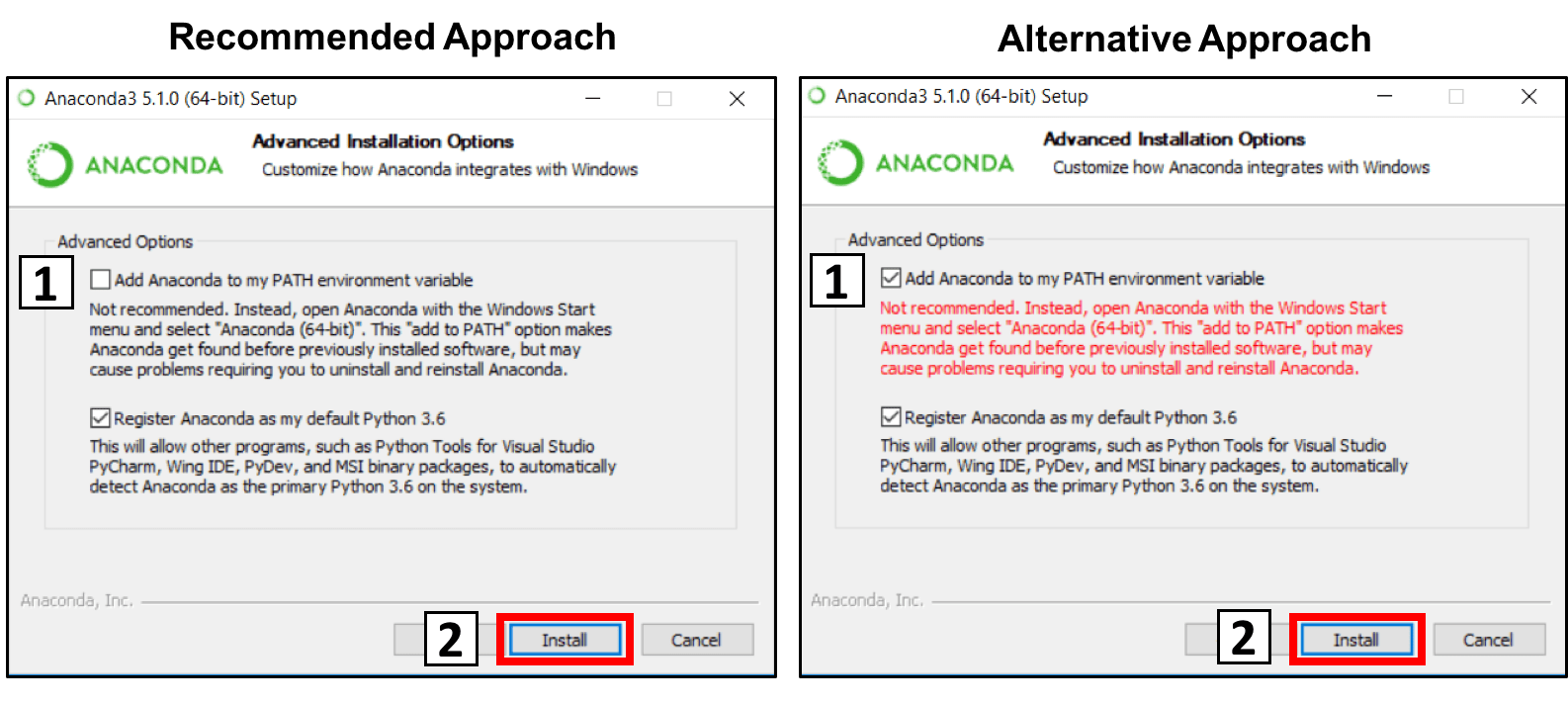 7. Click on Next.
7. Click on Next.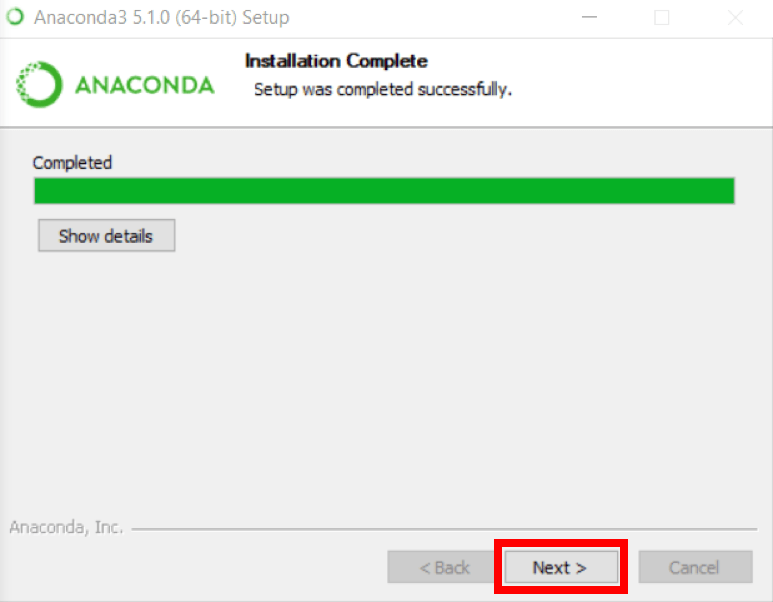
8. You can install Microsoft VSCode if you wish, but it is optional.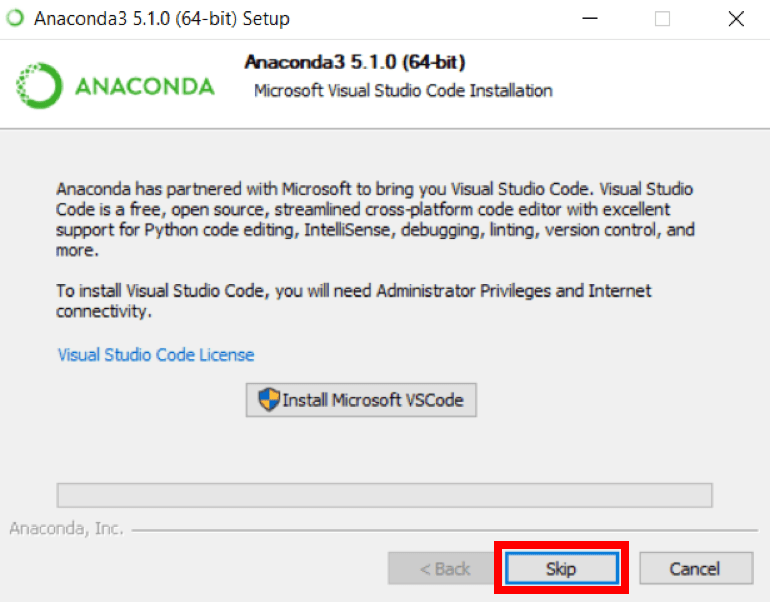
9. Click on Finish.
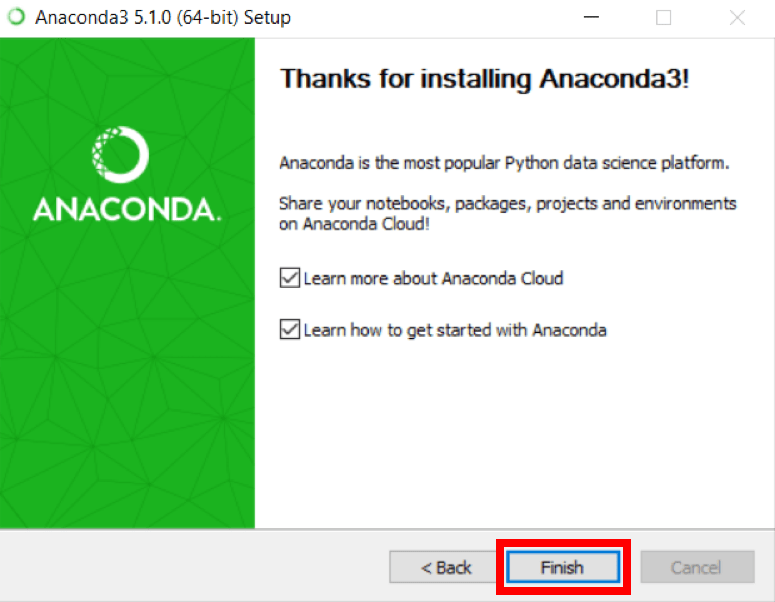
How to Add Anaconda to Path (Optional)
This is an optional step. This is for the case where you didn’t check the box in step 6 and now want to add Anaconda to your Path. The advantage of this is that you will be able to use Anaconda in your Command Prompt, Git Bash, cmder etc.
1. Open a Command Prompt.

2. Check if you already have Anaconda added to your path. Enter the commands below into your Command Prompt. This is checking if you already have Anaconda added to your path. If you get a command not recognized error like in the left side of the image below, proceed to step 3. If you get an output similar to the right side of the image below, you have already added Anaconda to your path.
conda --version
python --version

3. If you don’t know where your conda and/or python is, open an Anaconda Prompt and type in the following commands. This is telling you where conda and python are located on your computer.
where conda
where python
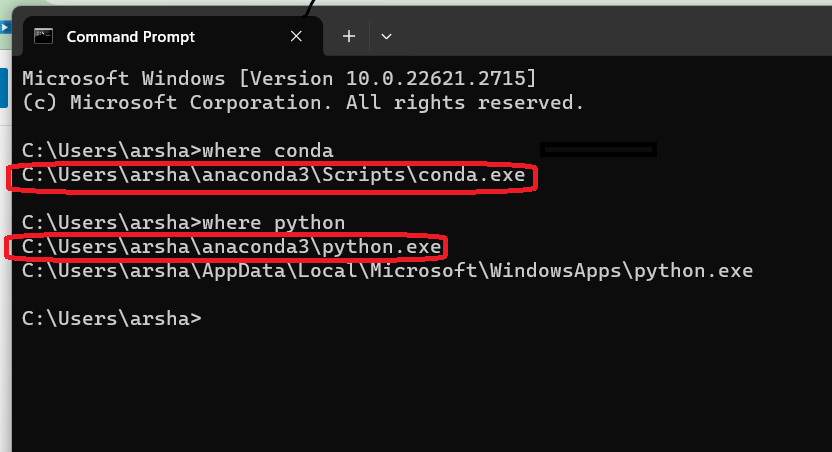
4. Add conda and python to your PATH. You can do this by going to your Environment Variables and adding the output of step 3 (enclosed in the red rectangle) to your path. If you are having issues, here is a short video on adding conda and python to your PATH.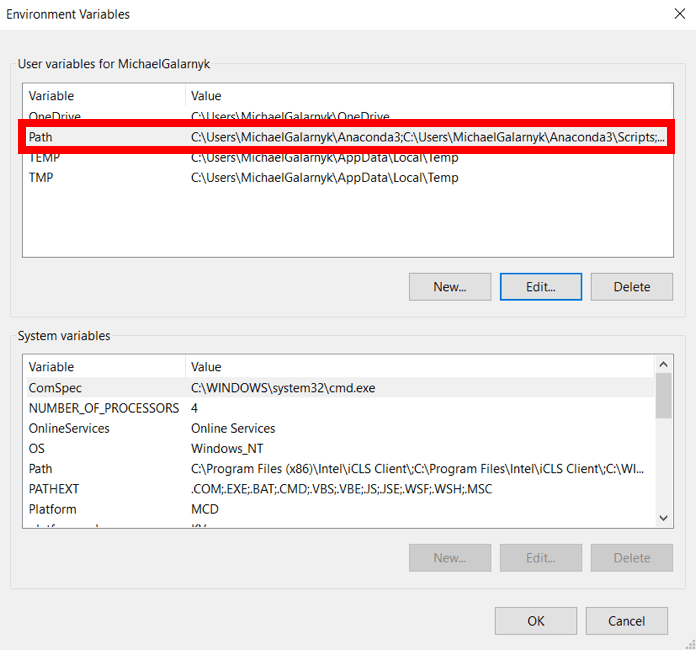
5. Open a new Command Prompt. Try typing conda --version and python --version into the Command Prompt to check to see if everything went well.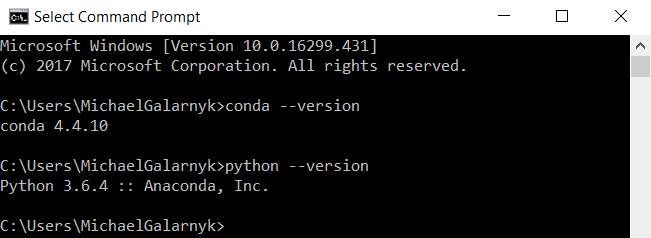
Conclusion
This tutorial provided a quick guide on how to install Anaconda on Windows as well as how to deal with a common installation issue. If you would like to learn more about Anaconda, you can learn more about it here. If you aren’t sure what to do to start coding on your computer, I recommend you check out the the Jupyter Notebook Definitive Guide to learn how to code using Jupyter Notebooks.
If you’re looking to jumpstart your career as a data analyst, consider enrolling in our comprehensive Data Analyst Bootcamp with Internship program. Our program provides you with the skills and experience necessary to succeed in today’s data-driven world. You’ll learn the fundamentals of statistical analysis, as well as how to use tools such as SQL, Python, Excel, and PowerBI to analyze and visualize data designed by Mohammad Arshad, 19 years of Data Science & AI Experience. But that’s not all – our program also includes a 3-month internship with us where you can showcase your Capstone Project.
Are you passionate about AI and Data Science? Looking to connect with like-minded individuals, learn new concepts, and apply them in real-world situations? Join our growing AI community today! We provide a platform where you can engage in insightful discussions, share resources, collaborate on projects, and learn from experts in the field.
Don’t miss out on this opportunity to broaden your horizons and sharpen your skills. Visit https://nas.io/artificialintelligence and be part of our AI community. We can’t wait to see what you’ll bring to the table. Let’s shape the future of AI together!
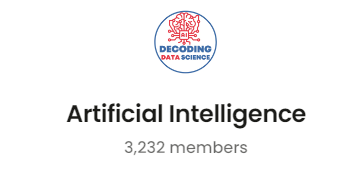
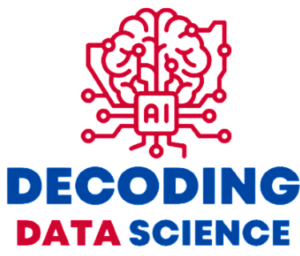
Awesome. Thanks for details